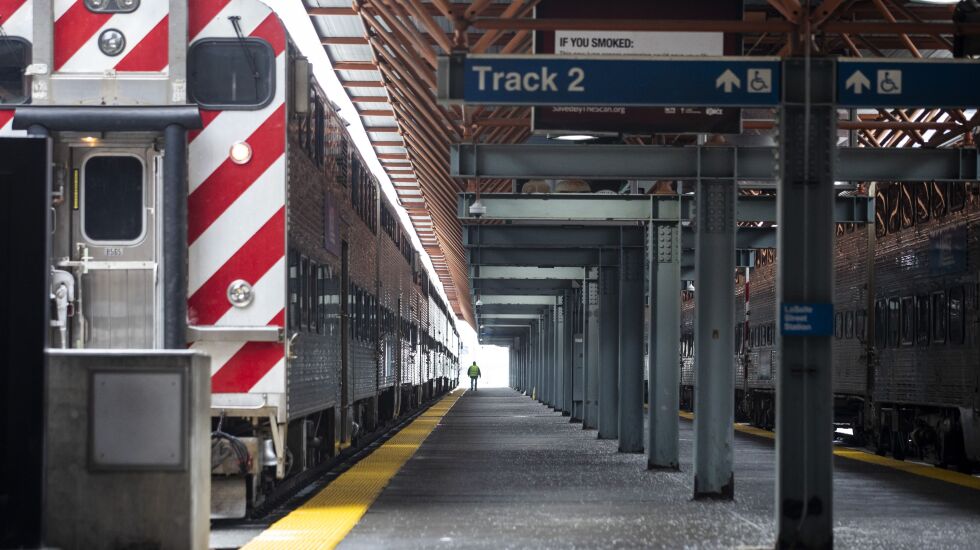
Metra — looking to raise ridership numbers that have drastically fallen since the pandemic — could start pitching itself as a transit option for high school and college students.
Yearly ridership on the commuter rail service was 74 million in 2019, but that number plunged 75% in 2020 — the year the region essentially shut down because of the coronavirus — and has yet to climb back above 25 million.
Metra desperately needs new riders. So the agency’s idea to attract students, along with non-office workers and people who would rather not drive, is solid.
But currently, CTA commuters have to pay another fare if they board Metra, and vice versa.
If the agency is serious about luring waves of new riders, then it’s time for Metra, the CTA and the Regional Transit Authority — which governs them both — to finally work out a deal that allows commuters to transfer between the agencies without paying more, in the form of another full fare, for the privilege.
Boosting the numbers
Metra announced its proposal at a board meeting last week.
“Our mission now — the shift — is to remind people we’re there,” Metra marketing executive Stanton Lewin told board members. “Then, we can play all those roles that we need to play in their lives.”
Lewin suggested using TikTok content, VR advertisements and celebrity cameos to woo new passengers. The agency could also partner with sports teams to persuade younger riders to take Metra to sporting events rather than drive.
“I know there’s a population segment that Metra does not serve,” Metra board chair Romayne Brown said. “I know we don’t want them in their cars. But are we also selling the point that there are places to park to board Metra?”
To its credit, Metra has already adjusted timetables to run more midday trains on the BNSF, Metra Electric, Rock Island and Union Pacific North lines.
And it was about time. For too long, the agency held on to 1950s-style schedules that provided rush hour service, but left the rails virtually idle for the rest of the day.
Not surprisingly, middle-of-the-day ridership on those four lines came closer to pre-COVID levels than on Metra’s other routes, the agency said.
As it seeks to increase ridership, Metra has a few things in its favor, such as road congestion and volatile gas prices — not to mention the price and expense of a car — which has many drivers looking for transit alternatives.
But Metra’s goal of boosting the numbers to 35 million for 2023 — a gain of at least 10 million over current ridership — would seem more realistic if a new fare structure that benefits riders who use both CTA and Metra during their commutes can be created.
Want to write a letter or an op-ed for the Sun-Times? See our guidelines.







